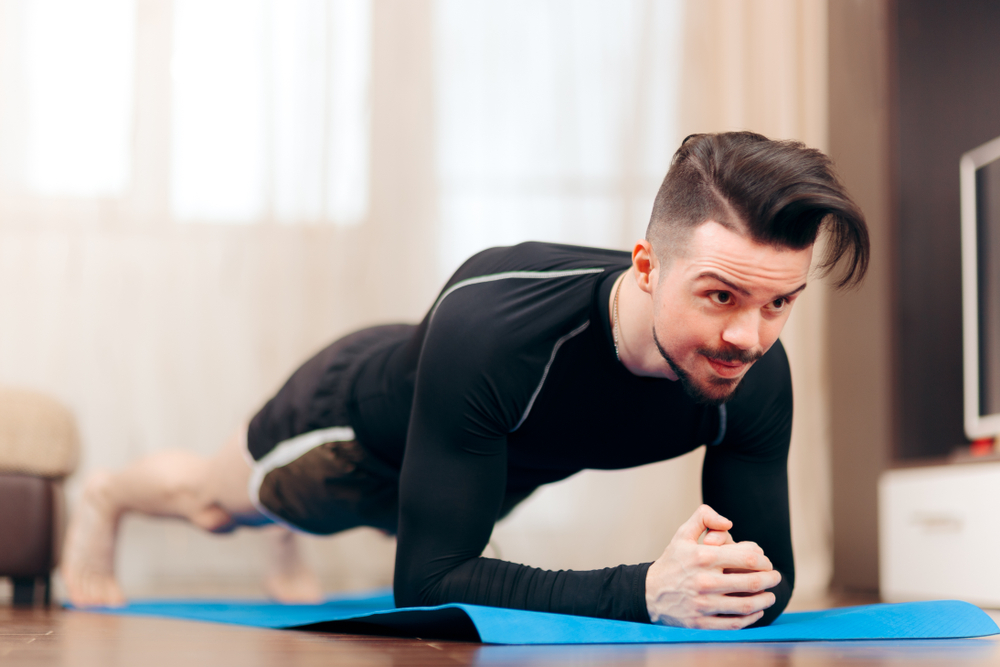Welcome to HomeFit, this blog is designed to help you stay active and healthy without the need for a gym membership or expensive gear. In today’s busy world, finding time to exercise can be challenging, but this blog aims to simplify this process by offering a variety of workouts that can be done in the comfort of your home.
We will cover a range of exercises that require little to no equipment, making them accessible to everyone. Whether you’re looking to build strength, improve cardiovascular health, or enhance flexibility, we have you covered. Each blog post will focus on a specific type of exercise and/or exercise equipment, providing detailed instructions, benefits, and variations to suit all fitness levels.
You’ll discover the power of bodyweight exercises such as push-ups, squats, and planks, which are fantastic for building strength and endurance. We’ll delve into the world of resistance band training, showcasing versatile and portable options for adding resistance to your routine. Additionally, we will explore cardiovascular workouts like high-intensity interval training (HIIT) that can boost your metabolism and burn calories efficiently.
Body Weight Resistance Exercise
Body weight exercises are awesome to increase muscle mass and strength through variations of movements. This group of exercises are perfect to perform in compound movements. Meaning more than one muscle is the primary mover and works more than one area at once.
Pushups
Pushups have been a corner piece in resistance training for a good reason. This movement works the pectoralis major, tricep and anterior deltoid. That is three different muscles being worked out at one time! Of course there are variations to exercises to focus on a specific area of a muscle.
Variations include:
- Decline pushups: focus on the top of the chest.
- Diamond pushups: to focus on your triceps.
Squat
Humans squat more than one may think. While we are not actively working out performing a “squat”, we do perform the same action while sitting down and getting up from a chair. All of the large muscles in the lower extremities are going to get involved. Although this is not a very complex exercise, it can be performed wrong which could eventually lead to injury. This is why if you are just starting out, have a chair behind you as if you are sitting down. When your butt touches the chair, stand back up performing a squat. Focus on bringing your glutes back, while keeping your knees behind the toes.
As you progress and eventually air squats get too easy, try these variations:
- Weighted squats: Using a backpack with adequate weight, or using free weights.
- Banded squats: Placing a band over the knees will force your knees inward, making you engage your abductor muscles.
- Single leg squats: Performed with one leg at a time, lowering until the free legs knee touches the ground.
Core
Core is often the neglected cousin in the family of exercise. A lot of the time people focus on muscle groups to grow bigger arms, shoulders and chest, but forget about the core. Core strength is crucial for daily life as it stabilizes the body, improves balance, and supports posture. It enhances movement efficiency, reduces the risk of injuries, and alleviates back pain. A strong core facilitates everyday activities, from lifting objects to standing and sitting, promoting overall functional fitness and well-being.
There are endless exercises to target your core, determining your strength and experience can help determine which exercise is best to start out with. Sit-ups and crunches are generally what everyone thinks of when working out the core. While these two options are awesome, try these exercises to freshen things up:
- Dead bugs: Laying on your back, with arms pointed to the ceiling and knees bent. Extend one leg forward while simultaneously reaching overhead with the opposite arm. Then repeat opposite limbs performing the same action.
- Bridging: Laying on your back, knees in flexion and feet flat on the floor. Lifting the hips off the ground, pushing upward drawing a straight line from your knees to your shoulders.
Conclusion:
Setting time aside in your day to exercise is often difficult for everyone as busy daily life can get in the way. With these exercises you do not need equipment, and setting a couple minutes aside to improve your health is very essential. Educating yourself on Muscle Fiber Types can also be very beneficial with planning your workout.
Not sure where to get started? Connect with one our of team Kinesiologists and get started today!

